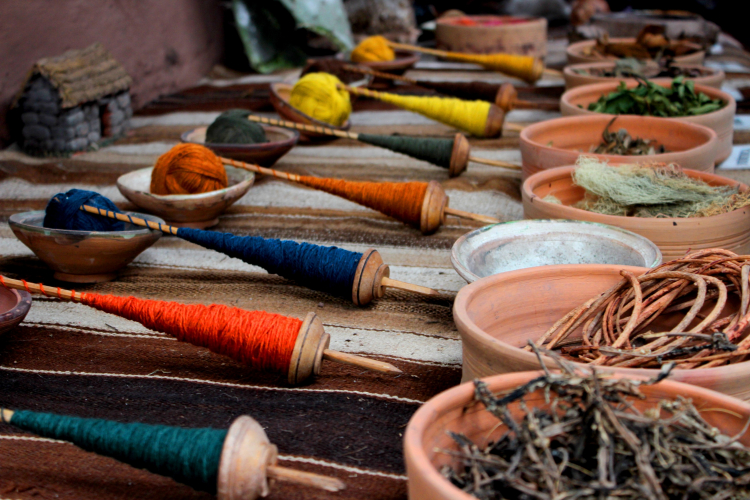Healing Textiles, The Future of Sustainable Fashion

As we grow more conscious of the negative environmental and social effects of the fashion industry, we are slowly edging away from being mindless consumers. There are important questions being raised by consumers: Where are my clothes coming from? Who is making my clothes?
Due to the recent influx of demand for sustainability in fashion, there has been a rise in thrifting and second-hand shopping, along with a call for brands and designers to be transparent with their buyers. But there is one question that has not yet arisen in our minds: what are our clothes doing to us and our bodies?
Hand Dyed Yarn, Image Credit: Unsplash/Jelleke VanooteThere are about 8,000 synthetic chemicals used in fashion manufacturing, most of which contain known carcinogens and hormone disruptors. The chemicals are kept undisclosed and hidden within the fibers of our clothing. The skin is the body’s largest organ, and since it is porous it absorbs whatever is put on it. If you are wearing clothing coated in toxic chemicals, it’s possible that you’re absorbing a small amount of these chemicals through your skin, which your body must process and eliminate. Chemicals such as acrylic, azo dyes, phthalates, nanosilver, and anything that is stain resistant, water proof, or wrinkle free have been found to cause cancer in rats and for the workers who work with them for long periods of time. In 2012, Greenpeace published a report entitled “Toxic Threads: The Big Fashion Stitch-Up,” which confirmed that major brands ― like Zara, Levi’s, Mango, Calvin Klein and H&M ― were making and selling clothes containing these hazardous chemicals.
Alchemy, Image Credit: Unsplash/Katherine HanlonWhile on the India Practicum with AUP, I worked closely with fashion brands that took sustainability very seriously and introduced me to medicinal, herbal textiles. The concept is derived from Ayurvastra - a branch of Ayurveda, the ancient 5,000 year old Indian system of Vedic healthcare. Loosely translated, “ayur” is Sanskrit for health, “veda” means wisdom, and “vastra” is cloth or clothing. These textiles are created through a process of herbal dyeing, which eliminates the impact of harmful chemicals and pesticides. The dyes are made with the roots, flowers, seeds, leaves, and bark of medicinal herbs such as turmeric, neem, and sandalwood. These herbs have anti-inflammatory and anti-bacterial benefits that can work wonders on the skin. When herbal textiles are worn or slept in, the fabrics deliver the effects of herbs through the skin. They are commonly used to calm skin conditions like eczema and rosacea, allowing for more people to have access to garments without risk of further damage.
This method has yet to come to vigor in the rest of the world. Hopefully in the coming years as we continue to grow more conscious and innovative, we will see a rise in herbal dyed textiles being used in larger and mainstream brands across the world.









